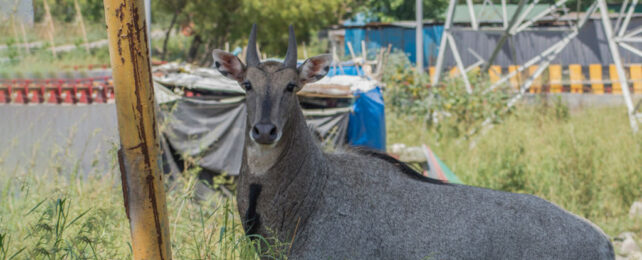As our streets emptied of humans during the COVID-19 lockdowns, people began reporting more sightings of animals that usually wouldn't dare step foot into the noisy chaos of our bustling cities.
The hopeful 'nature is healing' narrative emerged with its series of increasingly absurd memes and a spate of research looking into nature's reported changes.
"I can understand why we wanted to believe that," University of British Columbia conservation biologist Cole Burton told Lauren Leffer at Popular Science. "What animals were doing in response to people was super variable, that surprised us a bit."
Instead, using thousands of camera traps now deployed around the world, Burton and colleagues found that while some places experienced an increase in mammal activity, others saw a decrease.
We are a considerable danger to most animals. They justifiably fear us and will go to great lengths to avoid us, even while relying on us for resources. But with 8 billion of us now covering the land on Earth, steering clear of us has become difficult.
So the researchers compared mammal activity for over 300,000 camera days before and during the pandemic, using data from 102 sites in 21 mostly European and North American countries which included 5,400 camera traps.
Surprisingly, they found that in human-modified habitats, animal activity actually increased with human activity, by around 25 percent.
"This activity was more nocturnal, suggesting that animals persisting in these developed environments may be attracted to anthropogenic resource subsidies but still seek ways to minimize encounters with people through partitioning time," the researchers theorized in their paper.
Black-tailed deer (Odocoileus hemionus), for instance, were more abundant in an urban park near Vancouver after the park reopened following lockdowns.
"This counterintuitive result was likely due to the fact that cougars, the major predator of the deer, increased when people were absent during the lockdown, but then decreased their use of the park when it reopened," Burton told Mihai Andrei at ZME Science.
The team did find that carnivores increased their presence as our activity decreased. In 2021, iNaturalist citizen science data also revealed increased sightings of pumas in urban areas during 2020 lockdowns.
Carnivores proved most sensitive to changes in human activity. When our activity increased, predators withdrew and became more nocturnal.
"This motivates a continued emphasis on carnivore behavior and management as a key challenge for human – wildlife coexistence," the researchers write, "given the threatened status of many carnivores, the risk of negative outcomes of human – carnivore encounters and the ecological importance of carnivores as strongly interacting species."
Overall, Burton and team detected no global systemic shift in mammal activity during the pandemic.
Their work suggests that regulating the levels of our activity in urban areas at night and in less-developed landscapes may be helpful. This would provide species with the space to conduct essential interactions, like predation, that help keep ecosystems functioning.
Unfortunately, wild areas face increasing pressure from popular outdoor recreation, tourism, illegal hunting, and resource extraction.
As researchers have previously stated, increased observations of wildlife around our homes were probably mostly due to people having the time to notice them.
Our coexistence with wildlife leaves much to be desired. During the sixth mass extinction event, we might salvage some good from the continuing pandemic challenges by learning how to share our increasingly crowded planet.
After all, our own well-being is tied to theirs too.
This research has been published in Nature Ecology & Evolution.
